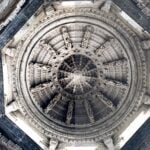Welcome to a journey through the captivating realm of ancient China’s architectural wonders. In this article, we will unveil the majesty that resides within the famous buildings of this extraordinary civilization. Delving deep into the rich tapestry of history and culture, we will explore the intricate tales etched within these magnificent structures. Prepare to be mesmerized as we transport you back in time to witness the grandeur and splendor of ancient China’s iconic buildings. Step into a world where artistry and engineering intertwine, where every column, arch, and courtyard holds secrets waiting to be unraveled. Join us as we embark on a voyage through the architectural marvels that define ancient China’s legacy.
Ancient China’s Famous Buildings
The architectural marvels of ancient China continue to captivate and inspire us centuries later. These structures not only showcase impressive engineering and design but also hold profound historical and cultural significance. Let’s delve into the world of ancient China’s famous buildings and unveil their majesty.
The Great Wall of China
* In the realm of ancient China’s famous buildings, none are as iconic or awe-inspiring as the Great Wall. This monumental structure stands as a testament to human resilience and ingenuity.
* This colossal wall, stretching over 13,000 miles, served as a formidable defense against invasions.
* From the watchtowers dotting its length, sentries kept a vigilant eye on the horizon, symbolizing the might and unified spirit of ancient China.
“The Great Wall of China stands tall as a testament to the indomitable spirit and unity of ancient China, protecting its people for centuries.”
The Forbidden City
* Nestled in the heart of Beijing, the Forbidden City stands as a magnificent palace complex that once housed Chinese emperors.
* Its grandeur is unparalleled, with intricate architecture, majestic halls, and sprawling courtyards. Each element exudes opulence and symbolic significance.
* The meticulous planning and construction of the Forbidden City reflect the emperor’s authority and the hierarchical structure of ancient Chinese society.
“Stepping into the Forbidden City is like immersing oneself in a treasure trove of imperial grandeur, where every inch whispers tales of power and grandiosity.”
The Terracotta Army
* Unearthed in 1974, the Terracotta Army is another symbol of ancient China’s architectural and artistic mastery.
* This vast collection of intricately crafted terracotta warriors, horses, and chariots stands as a tribute to the first Emperor of China, Qin Shi Huang, in his afterlife.
* Each soldier bears unique features and expressions, reflecting the exceptional craftsmanship and attention to detail that ancient Chinese artisans possessed.
“The Terracotta Army’s silent vigilance immortalizes the might and vision of Emperor Qin Shi Huang, offering a glimpse into the rich artistic heritage of ancient China.”
The Temple of Heaven
* The Temple of Heaven in Beijing is a celestial sanctuary where emperors of the Ming and Qing dynasties offered prayers for a bountiful harvest.
* Its architectural brilliance lies not only in its elegant design but also in its harmonious integration with the natural surroundings.
* The intricate craftsmanship and symbolic features evoke a sense of transcendence and reverence for the divine.
“As the sun sets over the Temple of Heaven, one can’t help but be in awe of its celestial beauty and the spiritual connection it fostered between ancient China and the heavens above.”
From the awe-inspiring Great Wall of China to the majestic Forbidden City, ancient China’s famous buildings transport us back in time, immersing us in a world of architectural splendor and cultural heritage. These structures serve as tangible reminders of the rich history and artistic achievements of an extraordinary civilization. So, let’s embrace the opportunity to walk in the footsteps of ancient Chinese emperors and marvel at the majestic legacy they left behind.
Ancient China was renowned for its magnificent and awe-inspiring buildings that still stand today as a testament to the country’s rich history and architectural prowess. From the grandeur of the Great Wall to the splendor of the Forbidden City, the ancient Chinese builders left behind a legacy of remarkable structures that continue to fascinate people from all over the world. If you’re curious to explore these remarkable ancient China buildings, click here to uncover the secrets of their construction, design, and historical significance: ancient china buildings.
A Brief Overview of Ancient Chinese Architecture
[youtube v=”8g2B8Fgf-8Q”]
From the earliest records of Chinese history during the Shang Dynasty to the magnificent structures that still stand today, ancient Chinese architecture has left a lasting imprint on the world. This article provides an insightful look into the terminologies, characteristics, and famous buildings that define this rich architectural tradition.
Chinese Architecture and Its Influence
Chinese architecture has not only influenced the development of other East Asian countries such as Korea, Vietnam, and Japan, but it has also showcased the strength and military power of the Chinese civilization. This enduring influence is evident in the preservation of ancient Chinese architectural marvels for countless centuries.
Terminologies in Chinese Architecture
To fully understand ancient Chinese architecture, it is essential to familiarize oneself with its unique terminologies:
- Dugong/Tokung: A system of wood construction atop a column that supports the roof.
- Feng Shui: The art of proper orientation of spaces to harmonize with its environment.
- Paylu: An entrance or gateway.
- Longmont Grottos: Also known as Longmon Caves, these are examples of Chinese Buddhist art, featuring sculptured statues of Shakamuni Buddha and his disciples.
- Meiji Shan Grottos: A series of 194 Rock Cut caves in the hillside of Meijishan and tiansu Gansu Province.
- Great Wall of China: A series of wall fortifications spanning around 5,500 miles along China’s northern border.
The Forbidden City and Other Remarkable Structures
The Forbidden City, the political and ritual center of China for 500 years, stands as a testament to the opulence and symbolic significance of ancient Chinese architecture. Its grandeur is only matched by the incredible craftsmanship showcased in the Terracotta Army, a collection of intricately crafted terracotta warriors that immortalize the first Emperor of China, Qin Shi Huang.
Other significant structures include:
- Temple of Heaven: A celestial sanctuary where emperors offered prayers for a bountiful harvest.
- Shan Mausoleum: A mausoleum that houses the remains of important figures from Chinese history.
- Yellow Crane Pagoda: A pagoda that originated from Buddhist stupas and features a unique blend of tower and pavilion characteristics.
The Character of Chinese Architecture
Ancient Chinese architecture boasts several distinctive elements that set it apart:
- Varied Roof Tiles: Buildings are identified by their roof tiles, with colors such as yellow for Imperial Palaces, red for houses of mandarins, and blue, green, and purple for common structures.
- Timber Construction: The majority of structures are made using timber and incorporate the tokong system.
- Flexibility and Symmetry: Architectural complexes are typically flexible in their functions and symmetrical in design.
- Curved Hip Roofs: Roofs often feature a curved hip that tapers upward at the ends.
- Courtyard Orientation: Dwelling units are arranged around a common courtyard, with buildings oriented towards the four cardinal points.
Famous Buildings in Chinese Architecture
Some of the most famous buildings in Chinese architecture include:
- The Great Wall of China: An iconic structure that spans thousands of miles, serving as a defense against invasions.
- The Forbidden City: A grand palace complex in Beijing that showcases opulence and symbolic significance.
- The Temple of Heaven: A celestial sanctuary where emperors offered prayers for a bountiful harvest.
- The Shan Mausoleum: A mausoleum that serves as the resting place for esteemed figures from Chinese history.
- The Yellow Crane Pagoda: A unique pagoda that originated from Buddhist stupas and features a blend of tower and pavilion characteristics.
It is worth noting that while the focus of this article is on ancient Chinese architecture, it is important to recognize that various civilizations around the world have contributed to the development of architectural styles, including Greece and Egypt, each with its own unique characteristics and influences.
Ancient Chinese architecture is a testament to the rich history and cultural heritage of China. The unique terminologies, remarkable structures, and distinctive elements make it a subject of fascination for both historians and architecture enthusiasts alike.
FAQ
Q: What are some famous buildings from ancient China?
A: Some famous buildings from ancient China include the Great Wall of China, the Forbidden City, the Temple of Heaven, the Terracotta Army, and the Summer Palace.
Q: How were these ancient Chinese buildings constructed?
A: Ancient Chinese buildings were constructed using traditional architectural techniques and materials such as wood, stone, and brick. They often incorporated intricate designs, symmetrical layouts, and innovative structural elements.
Q: What is the historical significance of these ancient Chinese buildings?
A: These ancient Chinese buildings hold great historical significance as they represent the architectural achievements, cultural values, and political power of ancient China. They provide insights into the country’s rich history, dynastic rule, and influence on art and culture.
Q: Can visitors still visit these ancient Chinese buildings today?
A: Yes, many of these ancient Chinese buildings have been preserved and restored, and visitors can still explore and admire them today. They are popular tourist attractions and offer a glimpse into the grandeur and cultural heritage of ancient China.
Q: Where can I learn more about the architectural marvels of ancient China?
A: To learn more about the architectural marvels of ancient China, you can refer to books, documentaries, and online resources that focus on the history and culture of the country. Additionally, visiting museums and cultural sites dedicated to ancient Chinese architecture can provide a more immersive experience.
- Star Ring Trends: Etsy vs Amazon - March 28, 2025
- Boost Pollinator Habitats: Baby Blue Eyes Sustainable Farming Guide - March 28, 2025
- Protect Big Black Bears: Effective Conservation Strategies - March 28, 2025
















